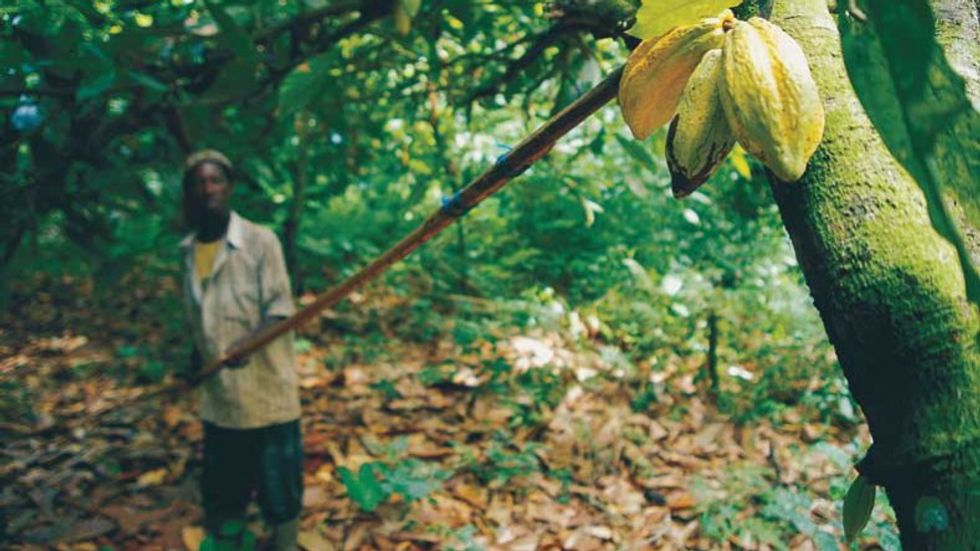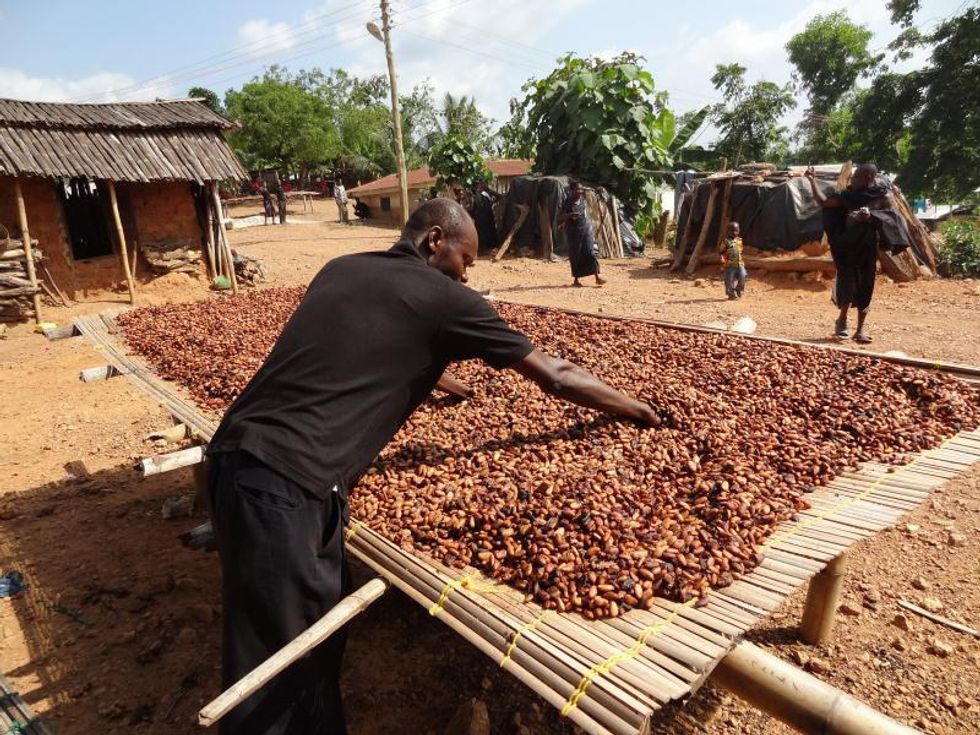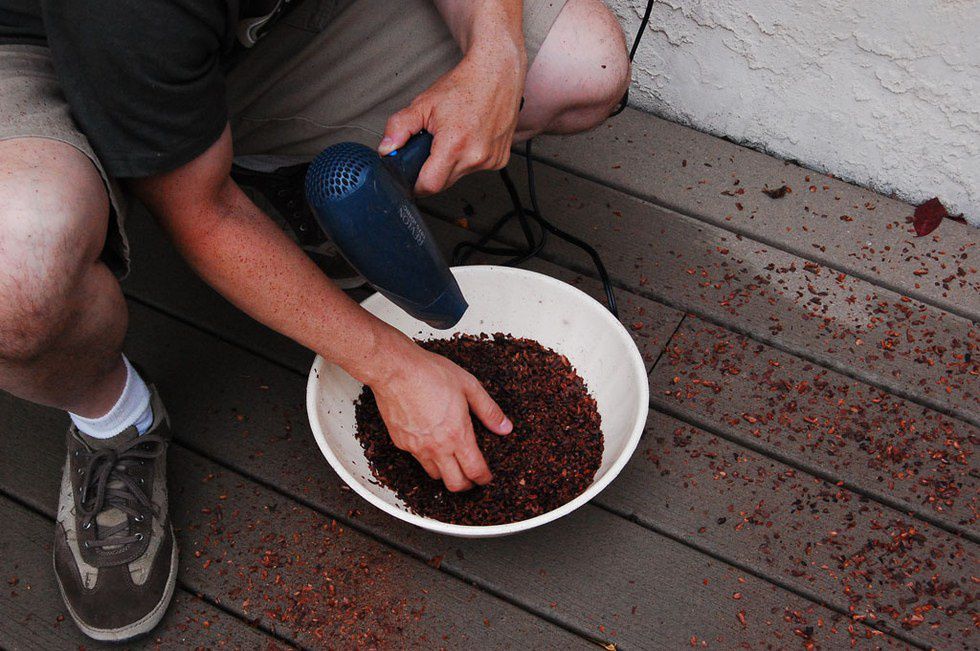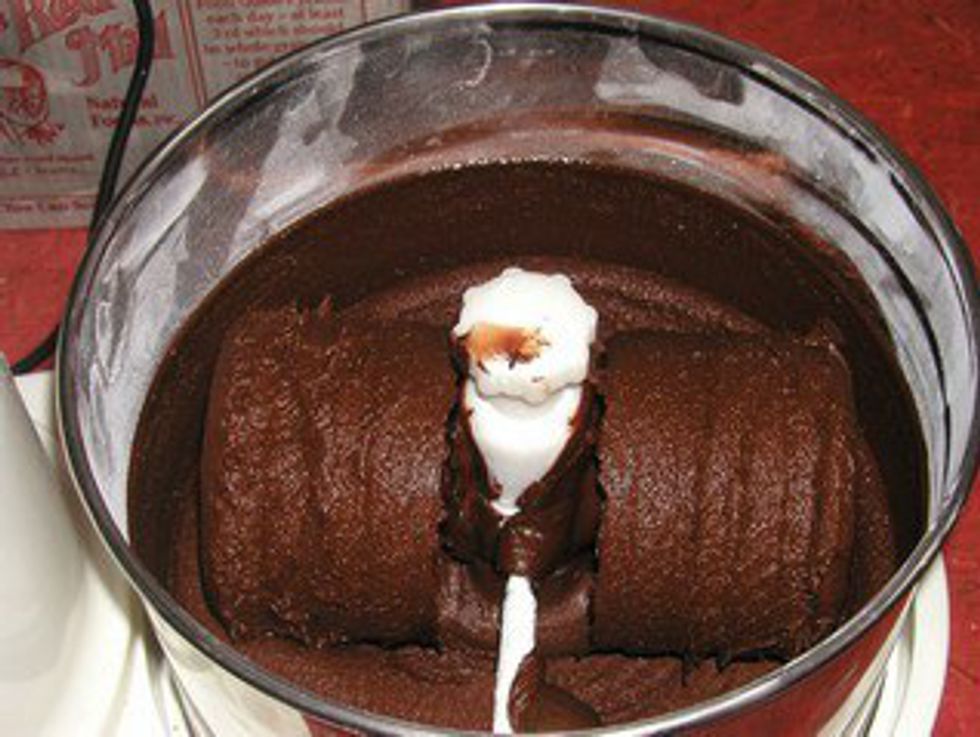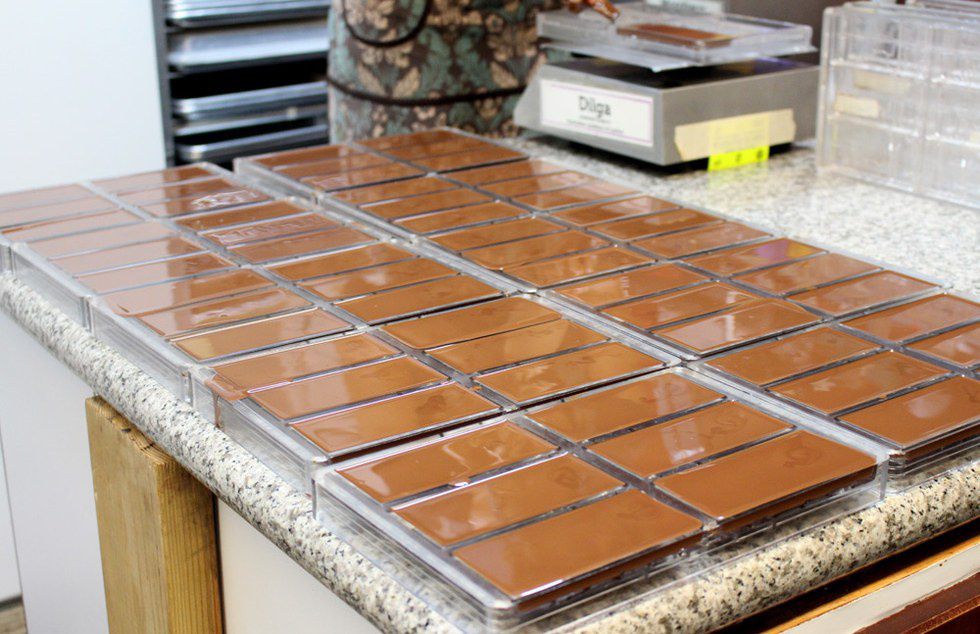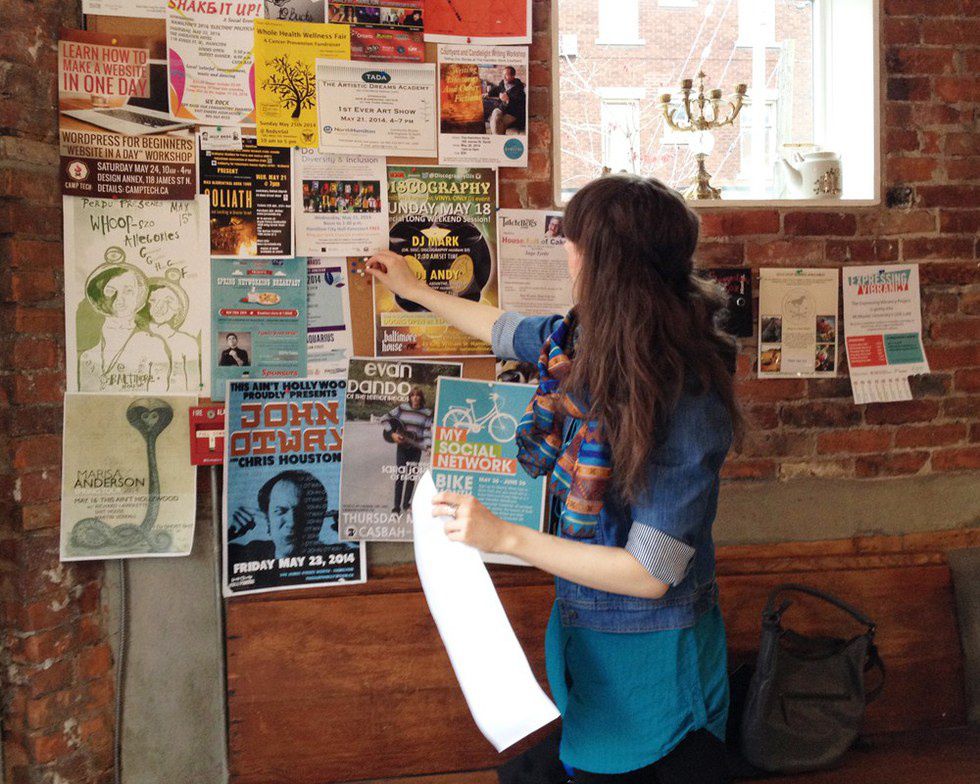How many people have gone into a grocery store and gotten a chocolate bar? I'm guessing most people have. In the 30 seconds that it takes to gobble down the full-sized bar, how many of you have actually thought, "I wonder how much work and effort goes into this candy bar? Probably a couple hours, right?"
Wrong.
The average chocolate bar takes around 10 days to go from cocoa bean to chocolate bar.
There are only a few very simple steps to make chocolate, but each step takes a lot of time. Ever since the beginning of chocolate, the process has stayed pretty much the same.
Harvesting
This is done by smacking cocoa pods down from trees with machetes. Workers cut down the pods from the trees, crack them open and scrape out the "guts" and then hand them off to the workers in the next step.
Fermentation
The longest step in the chocolate making process. Both the insides and the outsides of the cocoa pods are set out in wooden boxes where they are left to ferment. The fermentation period lasts from 5 days up to 2 weeks, all depending on the manufacturer of the chocolate. Who knew old beans is what makes chocolate taste like chocolate?
Drying
One of the most important steps in this process. After the beans are finished fermenting, they are set out in the sun in order to be completely sun dried. If they are not completely dry by the time they are put into bags and transported, the beans will turn moldy, and nobody wants moldy chocolate.
Roasting
Exactly what it sounds like. The beans are put into big roasters and roasted so that the outer shells begin to weaken. Also, without this step, chocolate would not taste like chocolate, as the beans don't have a very strong flavor without being roasted.
Cracking and Winnowing
These go hand in hand with each other. Cracking means cracking open the shell of the bean and winnowing means getting the insides (nibs) of the bean separated from the shell. A lot of manufacturers use hot air blown by a fan, and they blow the fan into the shell/nib mixture. If you're making the chocolate at home, a hair dryer is the way to go. The lighter shells fly out of the bowl and leave the heavier nibs at the bottom.
Grinding
Grinding the beans up releases cocoa butter. The cocoa butter has a melting point of between 93 to 101 degrees Fahrenheit, or 34 to 38 degrees Celsius. Without this cocoa butter, the beans would just be ground into crumbs. The liquid is called liquor although there is no alcohol in it. The liquor has a consistency of Elmer's Glue. It's very viscous, but still able to be poured. All the other ingredients are added at this time.
Conching
This refers to the process of grinding the ingredients into particles that are between 1 and 10 microns. Pretty small, huh? This process can take as little as 6 hours, but up to 100 hours for luxury Swiss chocolate. The mouthfeel of the chocolate depends on this step. The less amount of time that the chocolate spends being conched, the grittier the bar will feel in your mouth. Although with more time the smoother it will be, the flavor will weaken. The particles start to break down and lose their flavor.
Tempering
What gives the bar its snap. Without tempering, the chocolate will have a consistency of a big hunk of crumbly fudge. The mouthfeel will be gritty, even after being conched for 24 hours. Tempering the chocolate is a very difficult process if not done with big, expensive tempering machines. The process includes lowering, raising and lowering the temperature until a certain arrangement of crystals in the chocolate has formed. The shininess of the chocolate as it is being tempered is the indication that it is being tempered correctly. If it hardens, even when it's not tempered, you can just melt it down again and try again. It is a very tricky process and many people just cannot get it down.
Shaping
The process of putting the chocolate into molds or letting it just sit out and harden. After the chocolate is put into molds, it is put into a refrigeration unit that cools and hardens the chocolate. After the bars come out of the molds, it is cleaned up and any excess chocolate is remelted and put into the next batch.
Packaging and shipping
The final two steps in the chocolate process. These are self explanatory, I believe. The manufacturers wait until the chocolate is solid and out of the molds and put them in packaging and ship them to the stores.
Chocolate is eaten by almost everyone, but most people do not know that so much work and time goes into the bar that they eat in mere seconds. Maybe you will take your time with your next, or perhaps even every chocolate bar you eat, knowing that so much time goes into each simple little chocolate bar. Hours and hours go into each candy bar, but seconds go into consuming them. The process has been the same for hundreds of years. How do people think to do this stuff in this exact order to make such a delicious treat?




